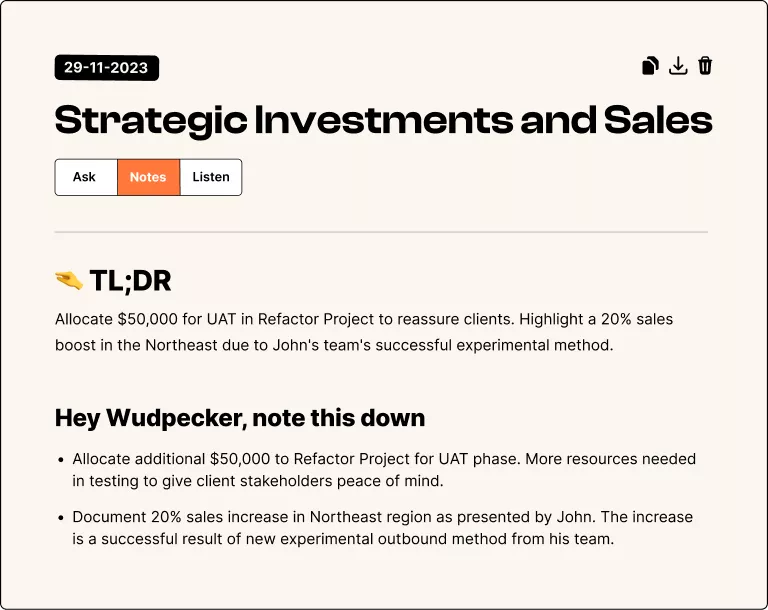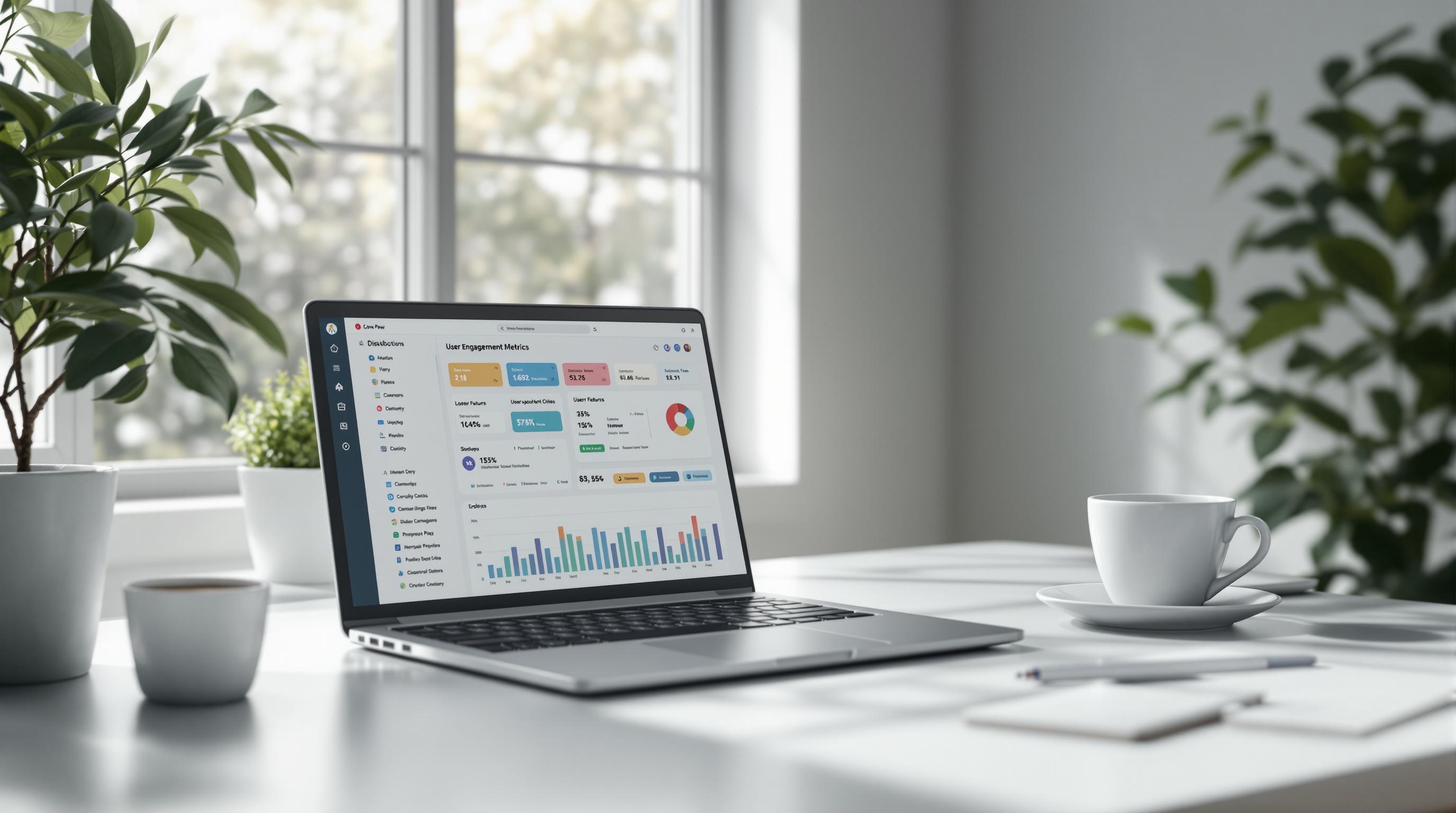In B2B SaaS, understanding when and how users engage is just as important as knowing how many users you have. Time-based user insights go beyond static metrics to reveal patterns, trends, and risks over time, helping you make better decisions about product development and customer management.
Key Takeaways:
- Time-Based Analytics: Tracks user behavior over time, highlighting trends, feature adoption, and churn risks.
- Standard Analytics: Focuses on static metrics like clicks and session lengths but often misses subtle shifts.
- Quick Benefits:
- Spot churn risks early.
- Track feature adoption trends.
- Automate insights to save time and resources.
Quick Comparison:
| Criteria | Time-Based Analytics | Standard Analytics |
|---|---|---|
| Behavior Detection | Tracks trends and gradual changes | Provides current-state snapshots |
| Implementation Effort | Simple setup with pre-configured tools | Requires custom event tracking |
| Risk Assessment | Proactive, trend-based alerts | Reactive, manual monitoring |
| Maintenance | Lower upkeep with automation | Higher due to manual dashboards |
Time-based insights give you a dynamic, actionable view of user engagement, making them essential for growing and retaining your SaaS customer base.
Why SaaS Companies Must Leverage User Behavior Analytics
1. Time-Based Analysis with Userlens

Userlens provides a clear view of changing user behavior in B2B SaaS through its time-based analysis. With its activity dots system, the platform highlights overall usage trends and specific feature adoption across organizations.
Here’s how it breaks down:
-
User Engagement Tracking
The built-in dashboard automatically showcases user activity at the organizational level. It’s ready to use without requiring any complicated setup. -
Feature Adoption Visualization
Heatmaps display feature usage patterns, helping teams identify drops in engagement. The system allows adjustments for different time periods, offering detailed insights into how features are being used. -
Risk Assessment
By analyzing usage patterns over time, Userlens detects changes that could signal churn risks or opportunities for upselling. This helps teams make better decisions in product development and customer management.
These insights go beyond simple metrics, offering a deeper understanding of user engagement trends. This knowledge helps B2B SaaS companies fine-tune their products and grow their business.
sbb-itb-6285ddb
2. Standard B2B Analytics Methods
Standard B2B analytics often rely on static metrics, which can overlook important trends in user behavior over time. This creates a clear contrast with more advanced, time-based analytics.
Basic Usage Tracking
This method focuses on metrics like login frequency, session length, and feature clicks. While it provides a general overview, it often misses subtle changes. For instance, a user might log in regularly but gradually stop using key features - something basic tracking might fail to flag.
Event-Based Analytics
Event tracking captures specific user actions but struggles to connect the dots between them. Teams often need to manually analyze multiple data points to identify trends, which can lead to errors and inefficiencies.
Implementation Challenges
Traditional analytics methods come with a range of setup and maintenance hurdles, including:
- Custom event configurations that demand engineering support
- Manual data integration and frequent code updates
- Building and maintaining custom dashboards
Risk Assessment Gaps
Without built-in tools for tracking changes over time, these methods require teams to monitor scattered data manually. This reactive approach can delay responses and miss chances for proactive user engagement.
These challenges highlight the importance of moving towards analytics that can adapt to shifts in user behavior.
Key Differences and Trade-offs
Here’s a breakdown of how time-based analytics stands apart from standard analytics:
| Evaluation Criteria | Time-Based Analytics | Standard Analytics |
|---|---|---|
| User Behavior Detection | Identifies gradual behavior changes and early signs of engagement issues | Provides snapshots of the current state, often missing subtle shifts |
| Implementation Effort | Easy to set up with pre-configured tracking | Requires extensive engineering work for custom event tracking |
| Data Processing | Automatically detects and analyzes trends | Relies on manual correlation and interpretation |
| Risk Assessment | Spots potential issues early through behavioral trends | Reactive approach based on present metrics |
| Resource Requirements | Lower maintenance needs thanks to automated insights | Requires more resources for dashboard upkeep and manual analysis |
| Feature Adoption Tracking | Tracks adoption patterns over time and across teams | Limited to basic usage counts, lacking time-related insights |
These differences emphasize the proactive nature of time-based analytics compared to the reactive approach of standard methods.
Time-Based Advantage: An Early Warning System
Time-based analytics acts as a safety net by revealing:
- Declining engagement trends before they escalate
- Early signs of churn risk
- Variations in how teams use features over time
Standard Analytics Drawbacks
In contrast, standard analytics often fall short by:
- Overlooking early signals, leading to missed intervention opportunities
- Allowing higher churn rates due to delayed reactions
- Failing to anticipate user dissatisfaction trends
Cost-Benefit Considerations
Time-based analytics can also save resources and reduce costs by:
- Minimizing the need for manual data interpretation
- Lowering engineering maintenance demands
- Streamlining customer success efforts for better efficiency
Next Steps and Recommendations
To make the most of time-based insights and boost user engagement monitoring, follow these steps:
1. Set Up Automated Usage Tracking
Use automated tracking to gather vital metrics such as:
- How often team members adopt specific features
- Time spent on key workflows
- Usage frequency by department
- Engagement patterns during onboarding
2. Configure Early Warning Systems
Set up automated alerts to flag potential issues like:
- Sharp drops in feature usage
- Decreasing team engagement
- Prolonged inactivity periods
Leverage specialized tools to simplify these processes and create a well-rounded approach to monitoring user behavior.
3. Use Time-Based Analysis Tools
Consider tools like Userlens to:
- Analyze activity heatmaps for usage patterns
- Track feature adoption across teams
- Observe engagement trends over time
Quick-Start Implementation Guide
Take these steps right away to see fast results:
- Identify Key Features: Pinpoint essential workflows and set baseline engagement metrics.
- Develop Response Plans: Prepare action steps to address different types of usage declines.
- Enable Continuous Tracking: Keep an eye on real-time changes in user behavior.
Measuring Success
Use the following metrics to evaluate the effectiveness of your analytics:
| Metric | Target Goal | Tracking Interval |
|---|---|---|
| Early Risk Detection | Identify issues 30+ days in advance | Weekly |
| Team Adoption Rate | 80% active users within 60 days | Monthly |
| Feature Usage Consistency | Less than 15% fluctuation per month | Bi-weekly |
| Response Time to Alerts | Under 24 hours for critical warnings | Daily |
Related Blog Posts



.svg)



















.svg)
